Part I Japan’s Contribution to the 2030 Agenda for Sustainable Development
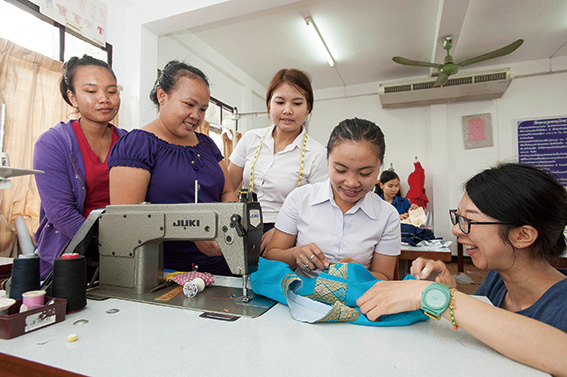
A Japan Overseas Cooperation Volunteer (apparel expert), Ms. Yuri Takahata teaches sewing at an apparel course at the Vientiane Headquarters of the Lao Youth Union. (Photo: Kenshiro Imamura / JICA)
Chapter I Achievements and Challenges in the Implementation of the MDGs
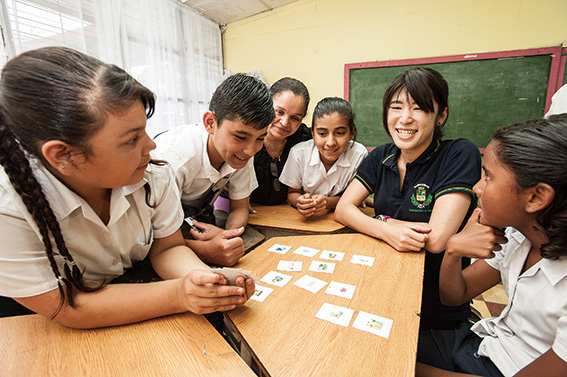
A Japan Overseas Cooperation Volunteer, Ms. Manami Takahashi educates elementary school children of the Costa Rican city of San Jose on environmental issues. (Photo: Kenshiro Imamura / JICA)
Section 1 What are the MDGs?
The Millennium Development Goals (MDGs) are goals that the international community set forth to achieve such targets as halving world poverty by 2015. “Millennium” refers to the point at which a period of 1,000 years ends and another begins. In September of the milestone year of 2000, the Millennium Declaration(Note 1) was adopted at the United Nations (UN) Millennium Summit. This Declaration, combined with the International Development Goals (IDGs) adopted at major international conferences and summits during the 1990s, constitute the MDGs.
The MDGs identify 8 goals with 21 targets and 60 indicators that are more specific than the goals themselves (see below). Most of these goals set 1990 as the base year and 2015 as the target deadline.
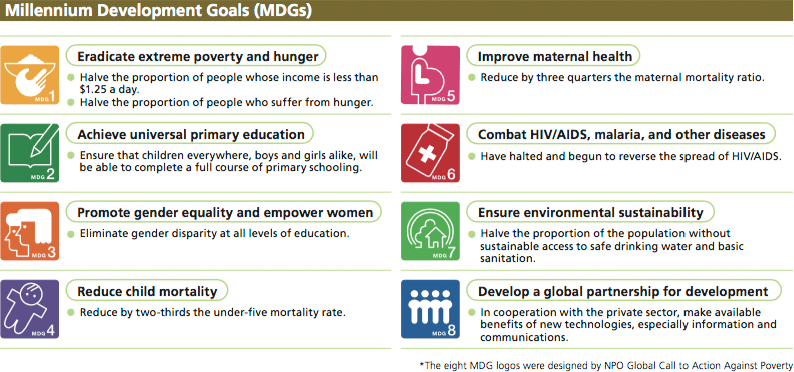
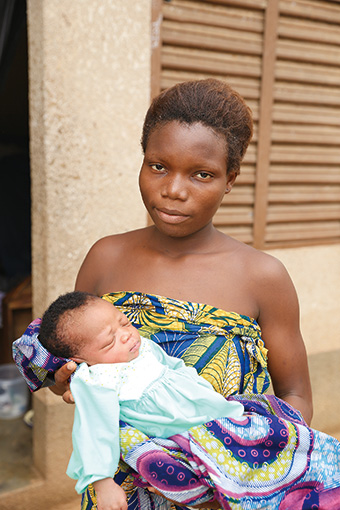
A mother holds her newborn baby boy in Ouidah, Benin. (Photo: Masataka Otsuka / JICA)
The MDGs were established based on lessons learned from earlier approaches to development cooperation. In the 1980s, the concept of “structural adjustment policy” gained currency in international development cooperation. This concept contended that if the economic structure of developing countries were reformed to enable market economy mechanisms to function, this would lead to economic development in developing countries, and by extension, the reduction of poverty.
However, it gradually came to light that this approach did not necessarily bring about a steady reduction of poverty, and conversely, worsened poverty in some cases. Partially due to lessons learned from this approach, more direct measures for tackling poverty began to gain global interest from the 1990s. At the World Summit for Social Development in 1995, world leaders set the goal of halving the world’s absolute poverty, with the aim of achieving “human-centered social development.”
In the following year, 1996, the IDGs were adopted in the new development strategy of the Development Assistance Committee of the Organisation for Economic Co-operation and Development (OECD-DAC) proposed by Japan. The IDGs included the goal of halving the proportion of people living in extreme poverty by 2015, which later became a core goal of the MDGs.
Then, in the milestone year of 2001, the international community created the MDGs, which consolidated these changes in international trends from the 1980s to the 1990s.
The individual goals of the MDGs may not necessarily be novel. Nevertheless, the MDGs were groundbreaking in the sense that they not only represented a pledge by leaders from around the world, including both developed and developing countries, to realize the goals through setting a target deadline and specific numerical targets, but also prompted the leaders to subsequently make commitments to strengthening the efforts for achieving the MDGs at the 2005 UN World Summit, the 2010 UN Summit on the MDGs, and various other occasions.
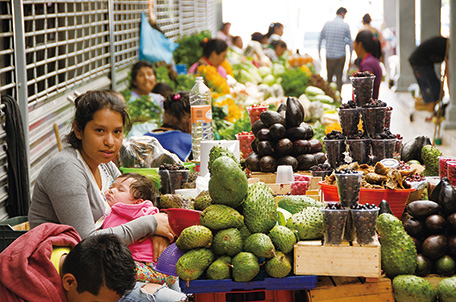
Women sell fruit in the old town of Querétaro City, Mexico. (Photo: Kenshiro Imamura / JICA)
- Note 1: The Millennium Declaration was adopted at the UN Millennium Summit on September 8, 2000. It consists of the following pillars: (i) peace, security, and disarmament; (ii) development and poverty eradication; (iii) protecting our common environment; (iv) human rights, democracy, and good governance; (v) protecting the vulnerable; (vi) meeting the special needs of Africa; and (vii) strengthening the UN. The Declaration provides a vision for the role the UN should play in the 21st century in response to globalization. It contains the underlying values of the MDGs and the goals that form the foundation of the MDGs.
